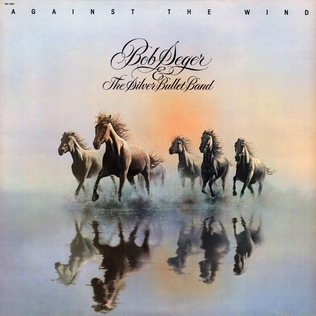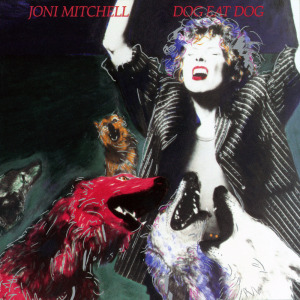
Robert Clark Seger is a retired American singer, songwriter, and musician. As a locally successful Detroit-area artist, he performed and recorded as Bob Seger and the Last Heard and the Bob Seger System throughout the 1960s, breaking through with his first album, Ramblin' Gamblin' Man in 1969. By the early 1970s, he had dropped the 'System' from his recordings and continued to strive for broader success with various other bands. In 1973, he put together the Silver Bullet Band, with a group of Detroit-area musicians, with whom he became most successful on the national level with the album Live Bullet (1976), recorded live with the Silver Bullet Band in 1975 at Cobo Hall in Detroit, Michigan. In 1976, he achieved a national breakout with the studio album Night Moves. On his studio albums, he also worked extensively with the Alabama-based Muscle Shoals Rhythm Section, which appeared on several of Seger's best-selling singles and albums.

Face the Promise is the sixteenth studio album by the American rock musician Bob Seger. The album was originally planned to be released in 2004, was delayed to 2005, and was officially released on September 12, 2006. It is his first new studio album since It's a Mystery in 1995 and is Seger's first studio album not to be credited to "Bob Seger and the Silver Bullet Band" since Beautiful Loser in 1975. It took Seger six years to finish Face The Promise. The first single, "Wait For Me", was premiered in July 2006.

Ramblin' Gamblin' Man is the first studio album by American rock band the Bob Seger System, released in 1969. The original title was Tales of Lucy Blue, hence the cover art. In the liner notes, Bob Seger says (sarcastically) he later realized Lucy Blue was "Ramblin' Gamblin' Man", and so changed the title of the album. He then thanks "Doctor Fine" for this realization. The original cover design for the album featured the nude figure from Botticelli's The Birth of Venus, but this too was changed for the final release.

Noah is the second studio album by American rock band The Bob Seger System, released in September 1969. Seger was displeased with the album as it was the label's intention to showcase Tom Neme as the voice of the band. Seger contemplated quitting music altogether after this album. It has never been reissued on a legitimate U.S. CD by Capitol and probably never will be, as Seger disavows it. It does, however, contain the Seger title song, "Noah", which was issued as a single in July 1969.

Mongrel is the third studio album by American rock band the Bob Seger System, released in 1970. During its four-week run on the Billboard 200 chart, the album entered the chart at the end of October 1970, then rose to number 171 two weeks later.

Brand New Morning is the fourth album by American singer-songwriter Bob Seger and his first solo studio album following the departure of backing band The Bob Seger System. It was produced by Punch Andrews and released in October 1971. The album has a stripped-down acoustic sound.

Back in '72 is the sixth studio album by American rock singer-songwriter Bob Seger, released in 1973. It was the first new album on Seger's manager Punch Andrews' label, Palladium Records, to be released under their distribution deal with the Reprise division of Warner Bros. Records and one of three early Seger albums that has never been reissued on CD.

Seven is the seventh studio album by American rock singer-songwriter Bob Seger, released in 1974.

Beautiful Loser is the eighth studio album by American rock artist Bob Seger, released in 1975. This album marked Seger's return to Capitol Records after a four-year split. His previous record with Capitol was Brand New Morning in 1971.

Stranger in Town is the tenth studio album by American rock singer Bob Seger and his second with the Silver Bullet Band, released by Capitol Records in May 1978. As with its predecessor, the Silver Bullet Band backed Seger on about half of the songs and the Muscle Shoals Rhythm Section backed Seger on the other half.

Against the Wind is the eleventh studio album by American rock singer Bob Seger and his fourth which credits the Silver Bullet Band. Like many of his albums, about half of the tracks feature the Muscle Shoals Rhythm Section as backing musicians. It was released in February 1980. It is Seger's only number-one album to date, spending six weeks at the top of the Billboard Top LPs chart, knocking Pink Floyd's The Wall from the top spot.

High Time is the second studio album by the American rock band MC5, released in 1971 by Atlantic Records.

Dog Eat Dog is the 12th studio album by the Canadian singer-songwriter Joni Mitchell, released in 1985. It was her second album for Geffen Records.

Greatest Hits is a compilation album by Bob Seger & the Silver Bullet Band, released in 1994. Certified Diamond by the RIAA, it is Seger's most successful album to date. In December 2009, Billboard and Nielsen SoundScan confirmed that with nearly nine million copies sold. Bob Seger's Greatest Hits was the decade's best-selling catalog album in the United States, even out-selling The Beatles' 1 and Michael Jackson's Number Ones. By September 2011, the album had sold a total of 9,062,000 copies in the United States.

Livin' It Up! is the fourteenth semi-based "lifestyle" studio album by Sammy Hagar and the Waboritas. While writing with Kenny Chesney and covering Toby Keith, Hagar began singing about enjoying the life of a beach dweller. It was vaguely reminiscent of Jimmy Buffett's career, and Hagar even used this time as an opportunity to meet more easy-going party fans as he went on a brief tour with Chesney.

A Place in the World is the sixth studio album by American country music artist Mary Chapin Carpenter, and was a No. 3 Country Album on the Billboard charts. Album tracks that entered the Hot Country Singles chart were "Let Me into Your Heart" at No. 11, "I Want to Be Your Girlfriend" at No. 35, and "Keeping the Faith" at No. 58. Carpenter wrote all of the songs on the album singlehandedly.

Rita Coolidge is the self-titled debut album by Rita Coolidge.
The discography of Bob Seger, an American rock artist, includes 18 studio albums, two live albums, five compilation albums and more than 60 singles. Bob Seger's albums have sold over 50 million copies and received seven multi-platinum, four Platinum and two Gold certifications by the RIAA.

Early Seger Vol. 1 is a compilation album by American rock singer–songwriter Bob Seger, released in 2009. The album, which includes archival material from the 1970s and 1980s, was released exclusively to Meijer stores on November 24, 2009. Since November 30, 2009, it has also been available for purchase at BobSeger.com, both on CD and as a digital download. Eventually Early Seger Vol. 1 became available at Amazon.com on February 1, 2010. "Gets Ya Pumpin" and "Midnight Rider" are the first two singles from the album.

The Island of Real is the ninth and final studio album by rock band The Rascals, released in 1972. It peaked at number 180 on the Billboard 200 chart. The group's final four singles — “Lucky Day,” “Brother Tree,” “Hummin’ Song” and “Jungle Walk” — failed to make the Top 100 and the Rascals disbanded.



















